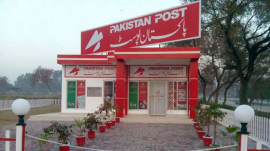
The National College of Arts (NCA) has completed documentation and mapping of important heritage sites of Rawalpindi city.
The project “Heritage Mapping of Rawalpindi City” was completed in collaboration with the World Heritage Institute of Training and Research for Asia and Pacific Shanghai (WHITRAP), a sub-organisation of United Nation Educational Scientific and Cultural Organisation (Unesco).
The mapping was done in light of challenges posed to conservation through urbanisation and development. The NCA Director, Nadeem Umer Tarar, said “Urban and rural development projects are integrated with the ongoing historical and cultural preservation schemes in the light of Unesco guidelines.” The NCA compiled a data of historical sites, conducted interviews with the residents of the area and collected oral history of the old buildings.
The project was also financially supported by the Netherlands. Students of the NCA compiled data about the city’s environment, its historical and cultural landscape and prepared a list of the sites. The students also listed the important historical buildings and places, traditional handicrafts and business centres.
The NCA also tried to understand problems related to traffic, disposal of solid waste and sewerage system. “We cannot promote tourism, if we ignore these problems, which is why, we did our best to understand these problems first and work for its solution,” said Tarar. He said that the team also assessed the vulnerability of historic buildings.
Tarar said that Rawalpindi had dozens of historic religious buildings and completion of the project would help to finance the preservation of these sites that would also create employment opportunities through tourism. “There are deficiencies in legal and institutional framework for urban and rural planning. The project will help the district government in planning urbanisation in future,” the NCA director said.
Muhammad Ibrahim, 65, a resident of Purana Qilla said, “The government can promote tourism by preserving the historical buildings and culture of this city.”
Published in The Express Tribune, June 28th, 2014.
1732762837-0/Taylor-(3)1732762837-0-405x300.webp)
















COMMENTS
Comments are moderated and generally will be posted if they are on-topic and not abusive.
For more information, please see our Comments FAQ